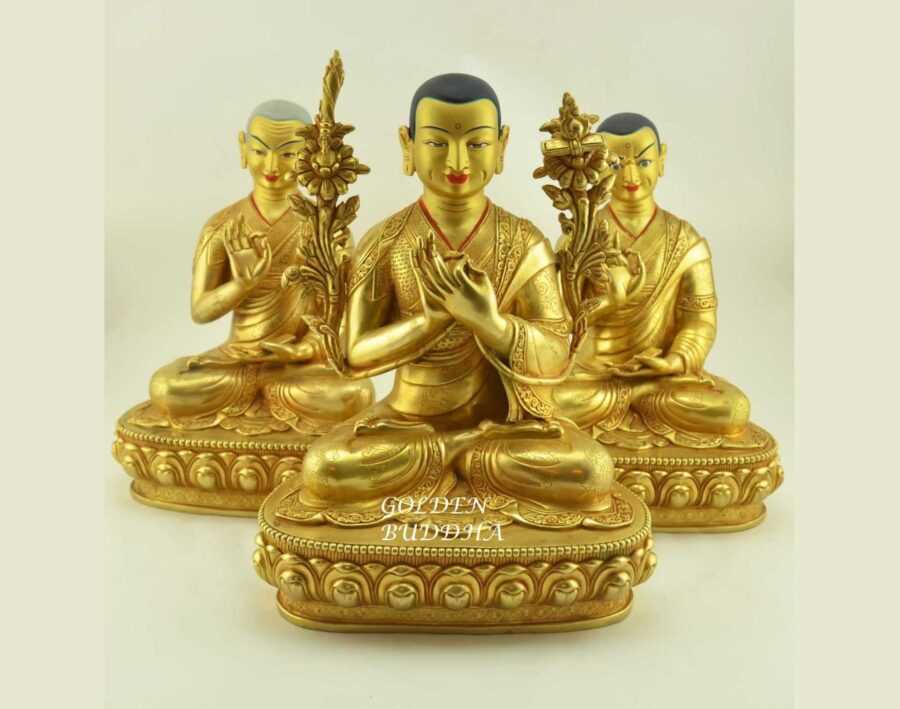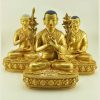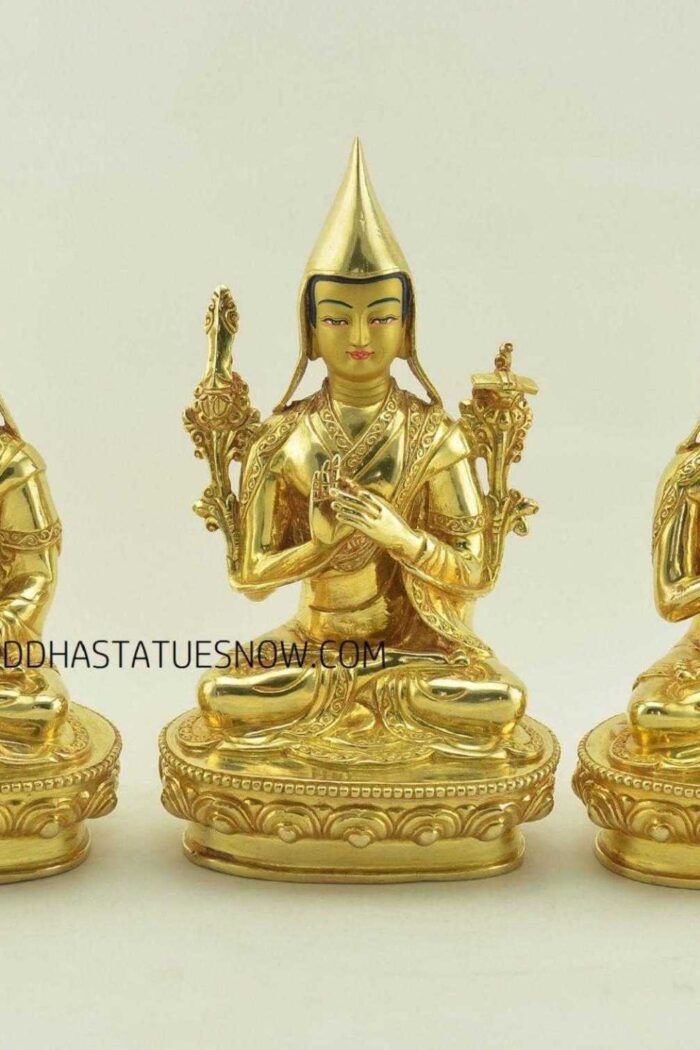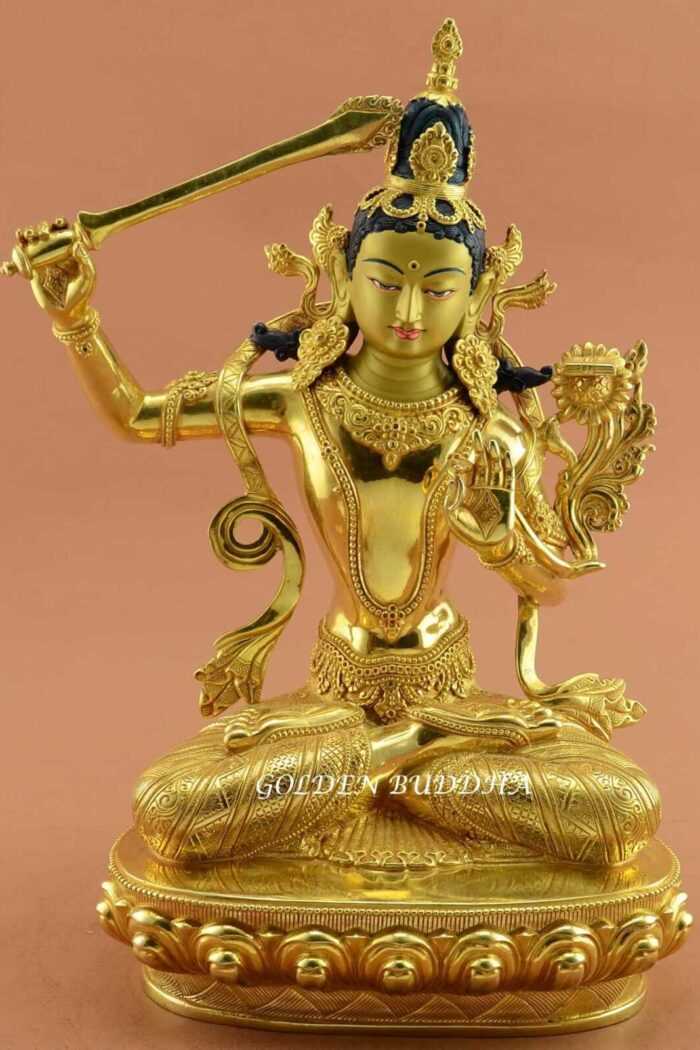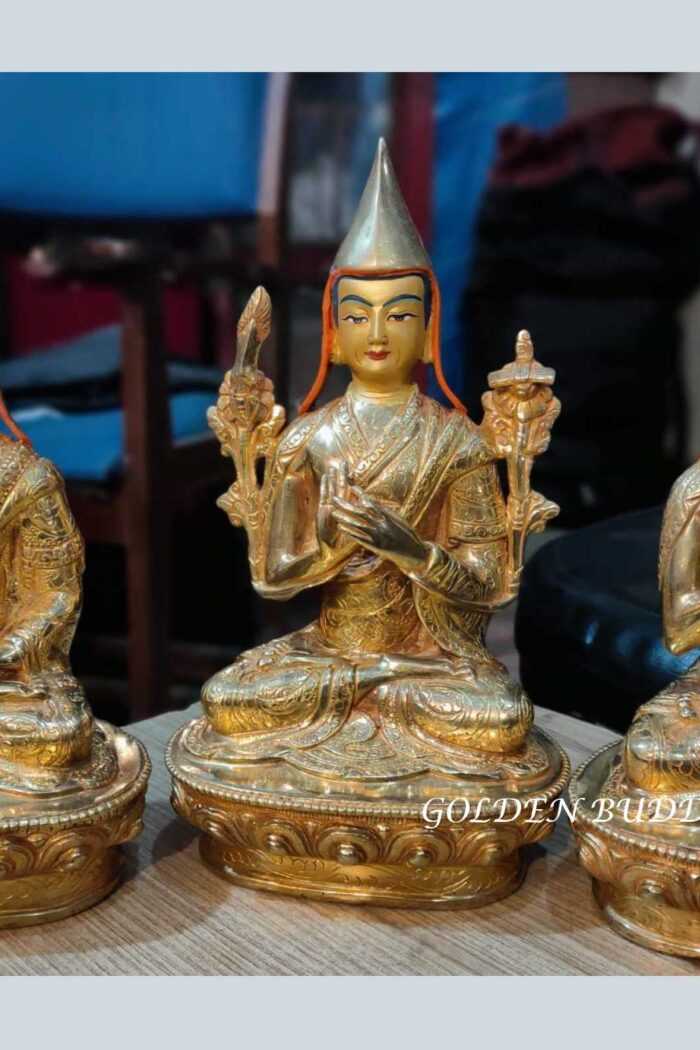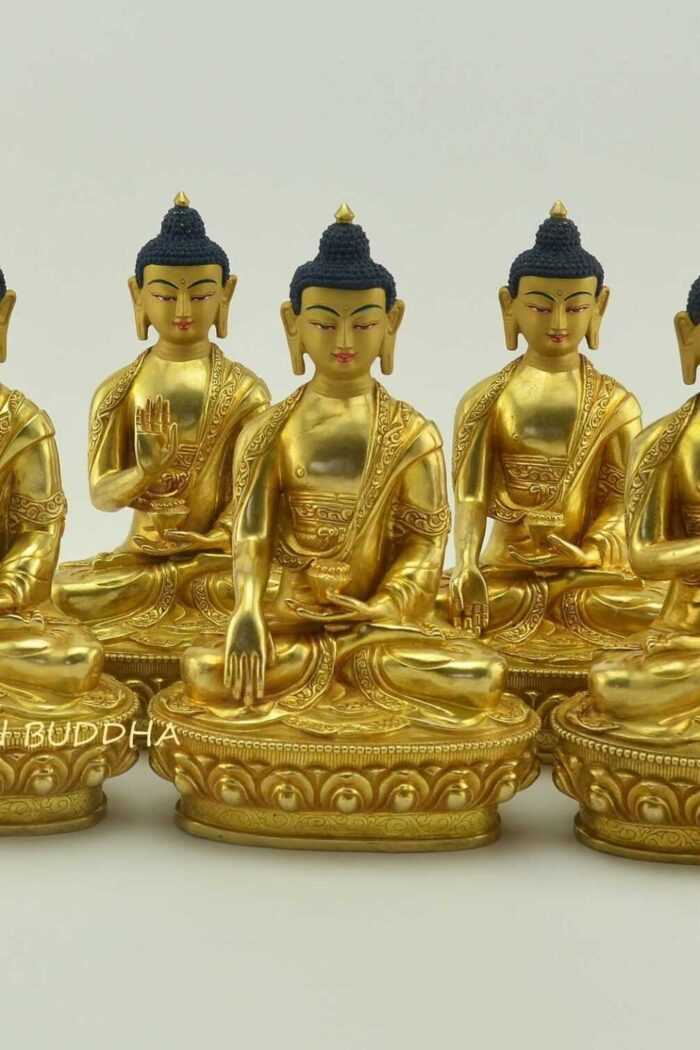Our Je Tsongkhapa statue set depicts Je Tsongkhapa in the middle and his two main disciples, one on each side of him. All three of the statues are depicted wearing the robes of ordained monks. This means that they have completed the perfection of the moral discipline.
Je Tsongkhapa has an uptala flower growing over each shoulder. Over his right shoulder the lotus flower is featuring the sword of perfected wisdom which is symbolic of Manjushri. Furthermore, the lotus flower over the left shoulder has the book of “Perfected Wisdom” resting in the blossom. Je Tsongkhapa is displaying the Dharmachakra mudra which set the “Wheel of Dharma” in motion.
Significance of Je Tsongkhapa Statue Set
Je Tsongkhapa founded the Gelug school of Buddhism in the 15th century ACE. As a result, he established the predominant order of Tibetan Buddhism which still exists today.
The disciples of Je Tsongkhapa are Gyaltsabje and Khedrubje. However, all three of them are held in very high esteem. Additionally, they were all considered to be embodiments of venerable Buddhist deities. Je Tsongkhapa was an embodiment of Manjushri who holds all the Buddhas’ wisdom. Plus, his disciple Gyaltsabje was the Bodhisattva Avalokiteshvara who holds the compassion of all the Buddhas. His disciple Khedrubje was an incarnation of Vajrapani who holds all the power of the Buddhas.
Je Tsongkhapa was very well respected because he had such an ordinary disposition and teaching method. He led mostly by example which had a very endearing affect on his devotees. Additionally, his rebirth in the 15th century was prophesied by Shakyamuni Buddha (according to Tibetan Buddhist beliefs). Indeed, Shakyamuni Buddha had said that an incarnation of Manjushri would appear in the “Land of the Snows” and he would serve as the protector of this joyful land. Click here to learn more about the history of Tibetan Buddhism.


